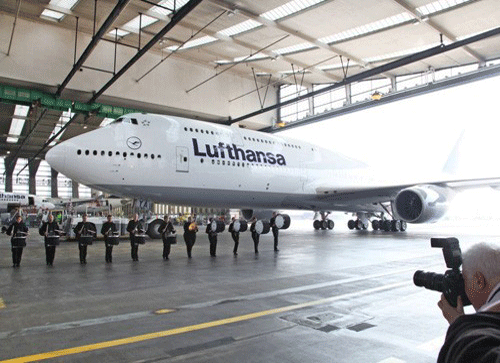The hottest jet engine ever guzzles less gas Engineers at GE think they could have a revolution on their hands, thanks to the new jet engine they've been testing recently that runs hotter than any of its predecessors. When combined with some other design changes, they figure their so-called ADVENT (short for ADaptive Versatile ENgine Technology) design could improve fuel efficiency by as much as 25 percent, extend flying ranges by 30 percent, and boost thrust up to 10 percent over contemporary engines.
The hottest jet engine ever guzzles less gas
 |
| The hottest jet engine ever guzzles less gas |
 |
| The hottest jet engine ever guzzles less gas |
 |
| The hottest jet engine ever guzzles less gas |
 |
| The hottest jet engine ever guzzles less gas |
 |
| The hottest jet engine ever guzzles less gas |
 |
| The hottest jet engine ever guzzles less gas |
 |
| The hottest jet engine ever guzzles less gas |
 |
| The hottest jet engine ever guzzles less gas |
 |
| The hottest jet engine ever guzzles less gas |
 |
| The hottest jet engine ever guzzles less gas |
 |
| The hottest jet engine ever guzzles less gas |
 |
| The hottest jet engine ever guzzles less gas |
ADVENT has been in development for some time, but engineers were just recently able to conduct tests and validate the advanced heat-resistant properties of the special composite material GE has developed for the engine's core.
Just like with a home wood stove, the hotter the temperature created inside an engine, the more energy it puts out and the more efficiently it burns its fuel. "It’s pure thermodynamics," says Rick Albrecht, manager for advanced military systems at GE Aviation.
But raising the temperature in a jet engine is not as simple as tossing another log on the fire, since jet fuel burns hotter than the melting point of even more advanced alloys used in aviation. Innovative venting and cooling techniques are used to keep jet engines from melting down in mid-air, but these systems also make the engines less efficient.
GE's answer was to develop advanced lightweight ceramics-based materials that can take the heat. Dubbed "ceramic matrix composites," CMCs are made from "silicon carbide matrix toughened with coated fibers made from the same material." GE claims CMCs outperform advanced alloys by resisting temperatures up to 2,400ºF (1,316ºC).
The ADVENT design combines this super hot-burning core with a jet engine that is essentially two types of engine in one. In one mode, ADVENT allows more air to flow through the core, resulting in increased thrust, speed and performance like that of a fighter jet. But the design also allows for that flow-through to be reduced, providing a more fuel-efficient cruising mode. For more details on how ADVENT works, see our earlier article on the technology.
While allowing fighter pilots to save Uncle Sam a few bucks on their cruise home from a mission is an obvious application, GE says CMCs could soon end up in engines used by passenger jets like the Boeing 747-8 jumbo.
“The latest GE jet engines like the LEAP, the GE9X, and even the GEnx are looking at an extensive use of CMCs,” says Dave Jeffcoat, ADVENT project manager at GE Aviation. “The tests show that we’ve picked the right technology. We are building on a solid foundation.”












.gif)
.gif)
.gif)
.gif)
.gif)
.gif)
.jpg)
.jpg)
.gif)
.gif)
Post a Comment